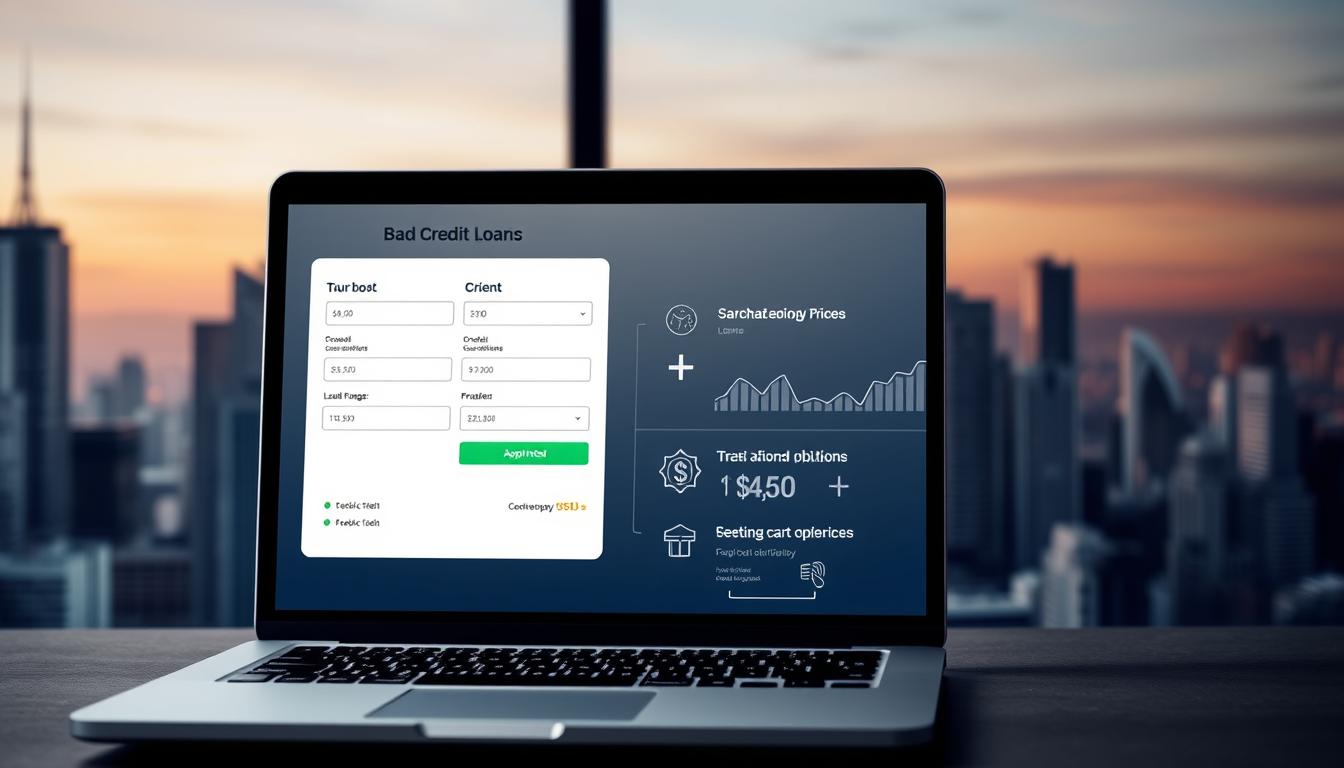Get the Best College Loans for Your Education
Did you know that college costs in the United States keep going up? This makes it hard for many students to pay without help. So, student loans are now a big part of how families pay for college.
We suggest students and their families look into different ways to pay for school. Start with saving, grants, scholarships, and federal loans. Knowing about all the financial aid options is important for making smart choices about your education.
Looking at all your financing options can help you reach your educational dreams. We’ll help you find the best ways to fund your education.
Key Takeaways
- Explore various financing options for education, including savings and scholarships.
- Understand the different types of student loans available.
- Make informed decisions about your educational investment.
- Consider federal loans as a primary financing option.
- Selecting the right financing mix can make your educational goals more achievable.
Understanding College Loans
As tuition fees keep going up, knowing about college loans is key. These loans are a big help for students going to college. We’ll look at the basics, including types and important terms.
Definition and Types of College Loans
College loans are money given to students for school costs. You have to pay it back, usually with interest. There are mainly two kinds: federal and private. Federal student loans are backed by the government and often have better terms, like lower interest rates.
Private loans, from banks and other lenders, can have different rates and terms. The Free Application for Federal Student Aid (FAFSA) helps you get federal loans and other aid. It’s important to fill out the FAFSA to see if you qualify for federal loans and other aid.
Key Terms You Should Know
Knowing key terms is important when dealing with college loans. Some key terms include:
- Interest Rate: The percentage at which interest is paid on a loan.
- Subsidized Loan: A loan where the government pays the interest while you’re in school.
- Unsubsidized Loan: A loan where you pay the interest from the start.
- Consolidation: Merging multiple loans into one with a single interest rate and payment plan.
Knowing these terms can help you make better choices about your college loans.
Federal vs. Private College Loans
Understanding the difference between federal and private college loans is key. Knowing how these loans affect your finances after graduation is crucial. It’s important to grasp the impact of each type on your financial future.
Differences Between Federal and Private Loans
Federal college loans come from the government. They often have lower interest rates and more flexible loan repayment options. On the other hand, private college loans are from banks and credit unions. They usually have variable interest rates and less flexible repayment terms.
One major difference is in repayment options. Federal loans offer income-driven repayment plans, deferment, and forbearance. This makes it easier for borrowers to handle their debt. A financial expert notes, “The flexibility of federal loans can be a lifeline for borrowers struggling to pay.”
Advantages of Federal College Loans
Federal college loans have several benefits. They include loan forgiveness programs and more manageable repayment terms. For example, federal loans qualify for income-driven repayment plans. This can greatly reduce monthly payments for those with lower incomes.
The U.S. Department of Education highlights, “Federal student loans offer benefits not found in private loans, like income-driven repayment plans and loan forgiveness programs.” This makes federal loans a popular choice for many students.
- Flexible repayment options, including income-driven repayment plans
- Deferment and forbearance options for borrowers facing financial hardship
- Loan forgiveness programs for borrowers in public service or certain professions
How to Apply for College Loans
Getting a college loan means going through a detailed application process. It checks if you really need the loan and if you qualify. We’ll show you how to fill out your application and what documents you’ll need.
Steps to Complete Your Loan Application
To get a private student loan, start by looking at offers from banks, credit unions, and online lenders. Here’s what to do:
- Look around and compare different loan options.
- Check your credit score and history to see if you’re eligible.
- Get the documents you need, like proof of income and ID.
- Fill out the loan application form carefully and fully.
- Send in your application and wait for the lender’s response.
Common Documents Required
When you apply for college loans, you’ll need to provide some documents. These might include:
| Document Type | Description | Example |
|---|---|---|
| Proof of Income | Documents showing your income or that of your parents/guardians. | Pay stubs, tax returns |
| Identification | Documents verifying your identity. | Driver’s license, passport |
| Academic Records | Documents showing your academic status. | Transcripts, enrollment verification |
Managing your personal finance well is key during the loan application. It’s important to understand your loan repayment options. Choose a plan that fits your financial situation.
Interest Rates: What to Expect
Understanding interest rates on college loans is key. Private student loans have varying rates from lender to lender. You might need a cosigner, and their credit score affects your rate.

Fixed vs. Variable Interest Rates
College loans come with fixed or variable rates. A fixed interest rate stays the same, making payments predictable. But, a variable interest rate can change, possibly raising or lowering your payments.
- Fixed Interest Rate: Offers stability and predictable repayments.
- Variable Interest Rate: May start lower, but rates could rise, affecting payments.
How Interest Rates Affect Your Total Costs
The interest rate on your loan greatly impacts what you’ll pay back. A small rate difference can lead to big savings or extra costs. For example, a lower rate can save you thousands in interest.
Let’s compare a fixed rate loan to a variable rate one. A fixed rate means your total cost is set. But, a variable rate could be lower if rates stay low. Yet, it could increase if rates go up.
“The key to managing your college loan effectively is understanding how interest rates work and choosing the right type of loan for your financial situation.”
When you consolidate loans, the interest rate matters a lot. Loan consolidation merges multiple loans into one with a single rate. This can make payments easier and lower costs if you get a good rate.
Repayment Options for College Loans
Repaying college loans doesn’t have to be the same for everyone. There are many repayment plans to fit different budgets. Knowing these options is key to handling debt well.
Standard Repayment Plans vs. Income-Driven Plans
There are mainly two repayment plans for federal college loans: Standard and Income-Driven. Standard Repayment Plans have fixed monthly payments for 10 years. This is good for those who can pay more each month and want to clear their loans fast.
Income-Driven Repayment (IDR) Plans adjust payments based on income and family size. These plans are best for those struggling financially. There are several IDR plans, like Income-Based Repayment (IBR) and Pay As You Earn (PAYE). Each has its own rules and how payments are figured out.
Loan Forgiveness Programs
Loan Forgiveness Programs offer big help for those in specific careers or who’ve made consistent payments. The Public Service Loan Forgiveness (PSLF) is well-known. It forgives the balance on certain federal loans after 120 qualifying payments for those in public service jobs.
Other forgiveness options include Teacher Loan Forgiveness for teachers in low-income schools and certain subjects. There are also forgiveness options under Income-Driven Repayment plans after 20 or 25 years of payments.
Borrowers should look into these options and pick the one that matches their financial situation and career plans.
The Impact of College Loans on Your Future
Understanding how college loans affect our future is key. The choices we make about borrowing can impact our financial stability and career paths.
The Importance of Borrowing Responsibly
Borrowing wisely is crucial for our financial future. We must think about our future income and monthly payments before taking out a private student loan. It’s important to find a balance between covering education costs and not taking on too much debt. Always check out federal loan options first, as they often have better terms.
To borrow wisely, we need to know our financial needs well. Understanding our loan terms, including interest rates and repayment plans, helps us make smart choices. This way, we can manage our debt and reach our long-term goals.
Managing Your Debt After Graduation
Managing college loan debt after graduation is essential for a healthy financial life. Look into income-driven repayment plans to make payments easier. Also, learn about loan forgiveness programs for public service or specific careers.
Creating a budget that includes loan payments is a must. By focusing on our expenses and making payments on time, we can avoid trouble. Staying informed about our loan options and seeking help when needed are key to managing our debt well.
Tips for Choosing the Right College Loan
Choosing the right college loan can seem hard, but with the right help, you can make a smart choice. It’s important to know the differences between various loan options when financing your education.
When picking a loan, we need to think about a few key things. These include the interest rate type, any fees, repayment terms, and special benefits or discounts from the lender.
Factors to Consider When Comparing Loans
When looking at loan options, don’t just look at the surface. We should think about fixed and variable APRs, rate discounts, fees, repayment plans while in school, and cosigner release policies. Knowing these details helps us find a loan that fits our financial needs and goals.
For example, a fixed APR loan means steady payments, but a variable APR loan might start lower but could go up. Some lenders also give rate discounts for on-time payments or good cosigner credit.
| Loan Feature | Description | Benefit |
|---|---|---|
| Fixed APR | Interest rate stays the same over the loan term | Predictable monthly payments |
| Variable APR | Interest rate can change over the loan term | Potential for lower initial rates |
| Rate Discounts | Lower interest rate for certain conditions (e.g., timely payments) | Lower total loan cost |
| In-School Repayment Options | Ability to make payments while still in school | Less debt after graduation |
| Cosigner Release | Option to remove a cosigner from the loan after certain conditions are met | More independence for the borrower |
Using Loan Calculators to Find the Best Option
To make things easier, we can use online loan calculators. These tools let us compare different loans, considering interest rates, terms, and repayment plans.
By changing values in a loan calculator, we can see how different loans might affect us over time. This helps us find the loan that’s best for our financial situation and future goals.
Common Mistakes to Avoid with College Loans
Dealing with college loans can be tough. Mistakes can hurt your finances for a long time. It’s key to know the risks and be careful.
Misunderstanding Terms and Conditions
Many borrowers don’t fully get their loan terms. This includes not knowing the interest rates, repayment plans, and fees. We should read the agreement carefully and ask questions if we’re not sure.
For example, some loans have variable interest rates that can go up. Knowing if your rate is fixed or variable helps with budgeting.
Overborrowing and Its Consequences
Another big mistake is borrowing too much. It can cause money troubles after you graduate. It’s better to borrow only what you need for school.
To avoid this, make a budget for school costs and stick to it. This helps figure out how much to borrow. Also, think about loan consolidation to make payments easier with a lower rate.
Getting advice from financial aid experts can also help. They offer advice tailored to your situation. By avoiding these mistakes, we can manage our loans better and achieve financial success.

Resources for Managing College Loans
Managing college loans can be tough, but there are many resources to help. It’s key to handle your loans well for a secure financial future.
Financial Aid Offices and Their Role
Your school’s financial aid office is a great place to start. They can guide you on loan repayment options and explain your loan terms. They also help with FAFSA and other financial aid forms.
| Resource | Description | Benefits |
|---|---|---|
| Financial Aid Office | Provides guidance on loan repayment and debt management | Personalized advice, assistance with FAFSA |
| Online Tools | Offers loan calculators and repayment planners | Helps in planning and managing loan repayment |
| Support Groups | Connects borrowers with others who have similar loan experiences | Provides community support and shared knowledge |
Online Tools and Support Groups
Online tools and support groups are also important. Online tools, like loan calculators, help you plan your repayment. Support groups offer a community and shared experiences.
Using these resources can help you manage college loans better. You’ll make informed decisions about your financial aid.
FAQs About College Loans
College loans can be confusing, with many questions about who can get them, how to apply, and how to pay them back. It’s important to understand these things to make smart choices about your money and college loans.
Common Concerns and Misconceptions
Many people don’t know the difference between federal and private college loans. They also wonder how these loans affect forgiveness programs. We explain that federal loans usually have better repayment plans and forgiveness options, like Public Service Loan Forgiveness, than private loans do.
Reliable Information Sources
For the latest on college loans and forgiveness, check out the Federal Student Aid website. It’s a great place for advice on education finances. Also, your college’s financial aid office can offer helpful advice and support.









